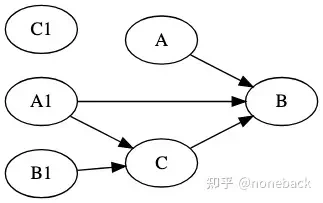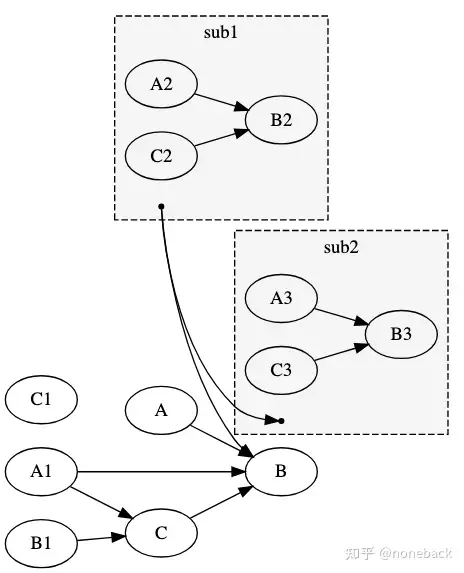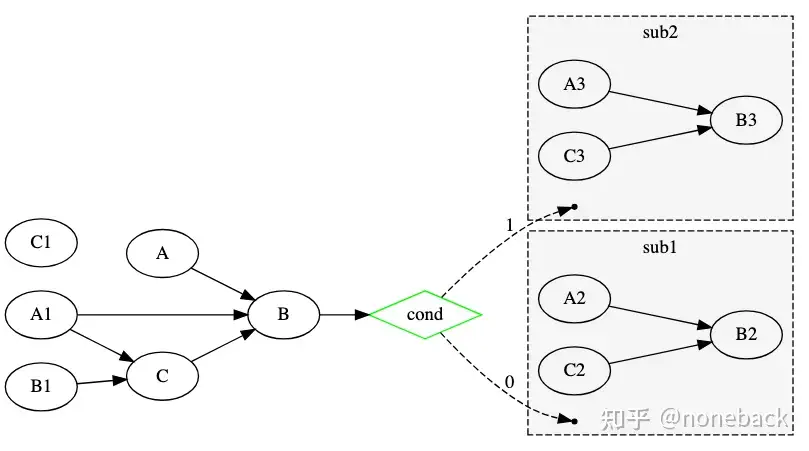go-taskflow: A taskflow-like DAG Task Execution Framework with integrated visualizer and profiler
项目地址:
介绍
A static DAG (Directed Acyclic Graph) task computing framework for Go, inspired by taskflow-cpp, with Go’s native capabilities and simplicity, suitable for complex dependency management in concurrent tasks.
- High extensibility: Easily extend the framework to adapt to various specific use cases.
- Native Go’s concurrency model: Leverages Go’s goroutines to manage concurrent task execution effectively.
- User-friendly programming interface: Simplify complex task dependency management using Go.
- Static\Subflow\Conditional tasking: Define static tasks, condition nodes, and nested subflows to enhance modularity and programmability.

static

subflow

condition
- Built-in visualization & profiling tools: Generate visual representations of tasks and profile task execution performance using integrated tools, making debugging and optimization easier.
Use Cases
- Data Pipeline: Orchestrate data processing stages that have complex dependencies.
- Workflow Automation: Define and run automation workflows where tasks have a clear sequence and dependency structure.
- Parallel Tasking: Execute independent tasks concurrently to fully utilize CPU resources.
Example
import latest version:go get -u http://github.com/noneback/go-taskflow
package main
import (
"fmt"
"log"
"os"
"runtime"
"time"
gotaskflow "github.com/noneback/go-taskflow"
)
func main() {
// 1. Create An executor
executor := gotaskflow.NewExecutor(uint(runtime.NumCPU() - 1))
// 2. Prepare all node you want and arrenge their dependencies in a refined DAG
tf := gotaskflow.NewTaskFlow("G")
A, B, C :=
gotaskflow.NewTask("A", func() {
fmt.Println("A")
}),
gotaskflow.NewTask("B", func() {
fmt.Println("B")
}),
gotaskflow.NewTask("C", func() {
fmt.Println("C")
})
A1, B1, C1 :=
gotaskflow.NewTask("A1", func() {
fmt.Println("A1")
}),
gotaskflow.NewTask("B1", func() {
fmt.Println("B1")
}),
gotaskflow.NewTask("C1", func() {
fmt.Println("C1")
})
A.Precede(B)
C.Precede(B)
A1.Precede(B)
C.Succeed(A1)
C.Succeed(B1)
subflow := gotaskflow.NewSubflow("sub1", func(sf *gotaskflow.Subflow) {
A2, B2, C2 :=
gotaskflow.NewTask("A2", func() {
fmt.Println("A2")
}),
gotaskflow.NewTask("B2", func() {
fmt.Println("B2")
}),
gotaskflow.NewTask("C2", func() {
fmt.Println("C2")
})
A2.Precede(B2)
C2.Precede(B2)
sf.Push(A2, B2, C2)
})
subflow2 := gotaskflow.NewSubflow("sub2", func(sf *gotaskflow.Subflow) {
A3, B3, C3 :=
gotaskflow.NewTask("A3", func() {
fmt.Println("A3")
}),
gotaskflow.NewTask("B3", func() {
fmt.Println("B3")
}),
gotaskflow.NewTask("C3", func() {
fmt.Println("C3")
})
A3.Precede(B3)
C3.Precede(B3)
sf.Push(A3, B3, C3)
})
cond := gotaskflow.NewCondition("binary", func() uint {
return uint(time.Now().Second() % 2)
})
B.Precede(cond)
cond.Precede(subflow, subflow2)
// 3. Push all node into Taskflow
tf.Push(A, B, C)
tf.Push(A1, B1, C1, cond, subflow, subflow2)
// 4. Run Taskflow via Executor
executor.Run(tf).Wait()
// Visualize dag if you need to check dag execution.
if err := gotaskflow.Visualize(tf, os.Stdout); err != nil {
log.Fatal(err)
}
// Profile it if you need to see which task is most time-consuming
if err := executor.Profile(os.Stdout); err != nil {
log.Fatal(err)
}
}
How to use visualize taskflow
if err := gotaskflow.Visualizer.Visualize(tf, os.Stdout); err != nil {
log.Fatal(err)
}
Visualize generate raw string in dot format, just use dot to draw a DAG svg.

How to use profile taskflow
if err :=exector.Profile(os.Stdout);err != nil {
log.Fatal(err)
}
Profile alse generate raw string in flamegraph format, just use flamegraph to draw a flamegraph svg.

What’s next
- Task Priority Schedule
- Taskflow Loop Support



 关于 LearnKu
关于 LearnKu




推荐文章: